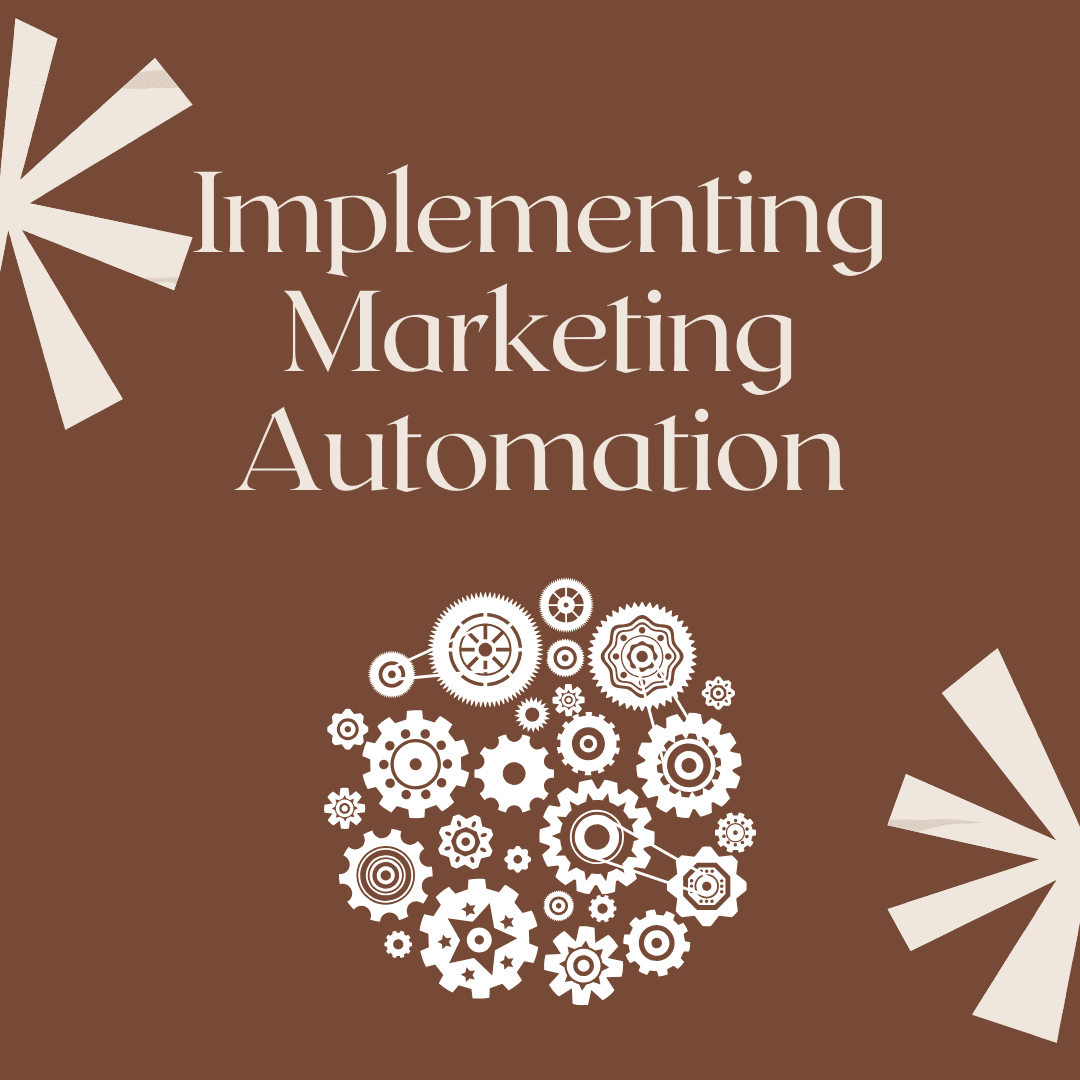How to Implement Marketing Automation: Streamlining Your Marketing Efforts

In today’s changing digital landscape, which is affected by AI and machine learning, staying ahead of the competition requires efficiency, precision, and personalization. With the advent of marketing automation, we have found that businesses have found a powerful ally in optimizing their marketing efforts. Marketing automation not only saves time and resources but also enhances customer engagement and boosts revenue.
In this blog post, we will explore the intricacies of how to implement marketing automation, providing you with a step-by-step approach to implementing it successfully in your organization as part of your digital marketing strategy.
Understanding Marketing Automation
When understanding how to implement marketing automation, it is important to understand its definition. It is simply the use of software tools and technologies to automate repetitive tasks; thereby streamlining marketing workflows to easily measure marketing campaign performance. These tools help businesses nurture leads, analyze customer behavior, and personalize marketing messages, ensuring a seamless and targeted customer experience.
Benefits of Marketing Automation
- Improved Efficiency: Automation eliminates manual intervention, allowing marketers to focus on strategic planning and creative tasks.
- Enhanced Personalization: Tailoring marketing messages based on customer behavior leads to higher engagement and conversion rates.
- Lead Nurturing: Automated workflows can nurture leads at various stages, increasing the likelihood of conversion.
- Data-Driven Decision Making: Automation tools provide valuable insights, enabling data-driven decisions for marketing strategies.
- Cost-Effectiveness: Despite the initial investment, automation reduces long-term marketing costs significantly.
Steps on How to Implement Marketing Automation

1. Set Clear Goals and Objectives
Define specific, measurable, achievable, relevant, and time-bound (SMART) goals for your marketing automation efforts. Determine what you want to achieve, whether it’s lead generation, customer retention, or improving sales.
2. Understand Your Audience
Create detailed buyer personas to understand your audience better. Identify their pain points, preferences, and behaviors. This knowledge will guide your automation strategies, ensuring relevant and targeted communication.
3. Choose the Right Marketing Automation Tool
Select a marketing automation platform that aligns with your goals, budget, and technical requirements. Popular options include HubSpot, Marketo, and Klaviyo.
4. Integrate Your CRM System
Integrate your marketing automation tool with your Customer Relationship Management (CRM) system. This integration ensures seamless communication between sales and marketing teams, enabling a unified approach towards customer engagement.
5. Create Engaging Content
Develop high-quality, relevant, and engaging content tailored to different stages of the buyer’s journey. This content forms the foundation of your automation campaigns, attracting and nurturing leads effectively.
6. Implement Lead Scoring
Assign scores to leads based on their interactions with your content and website. Lead scoring helps prioritize leads, allowing your sales team to focus on prospects with the highest likelihood of conversion.
7. Design Automated Workflows
Create automated workflows that trigger specific actions based on user behavior. These workflows can include email sequences, follow-up messages, and personalized offers. Map out customer journeys and design workflows that guide leads from awareness to conversion.
8. Personalize Your Communication
Utilize customer data to personalize your marketing messages. Personalization goes beyond addressing recipients by their first name; it involves tailoring content, product recommendations, and offers based on individual preferences and behaviors.
9. A/B Testing and Optimization
Continuously test different elements of your automation campaigns, such as subject lines, email copy, and call-to-action buttons. Analyze the results and optimize your campaigns for better performance. A/B testing ensures that you are always refining your strategies for maximum impact.
10. Monitor and Analyze Performance
Regularly monitor key performance indicators (KPIs) such as open rates, click-through rates, conversion rates, and customer lifetime value- then analyze the data to understand what works best for your audience and make data-driven adjustments to your automation campaigns.
11. Provide Comprehensive Training
Train your marketing and sales teams to effectively use the automation platform. Ensure they understand the features, best practices, and how to interpret analytics. Proper training maximizes the efficiency of your automation efforts and fosters collaboration between teams.
12. Comply with Data Protection Regulations
Adhere to data protection regulations such as GDPR or CCPA when collecting and processing customer data. Obtain explicit consent for communications and ensure that your automation practices align with legal requirements.
13. Regularly Review and Refine Strategies
The digital landscape is constantly evolving. Regularly review your automation strategies, keeping an eye on industry trends and emerging technologies. Stay agile and adapt your approaches to meet changing customer expectations and market demands.
Conclusion
Implementing marketing automation is not just a trend- it’s a necessity in the modern business landscape. By following these steps and embracing automation you can streamline your marketing efforts, enhance customer experiences, and drive substantial business growth. Remember, successful marketing automation is not a one-time setup but an ongoing process of refinement and adaptation. Stay innovative, stay customer-focused, and watch your marketing efforts transform with the power of automation.
Internet Marketing Geeks: Your Trusted Partner in Marketing Automation

At Internet Marketing Geeks, we take pride in being pioneers in the realm of digital marketing, specializing in helping clients, both current and new, implement the most suitable marketing automation tools. With our expertise, we guide businesses through the intricate process of selecting and implementing the right automation solutions, especially tailored to their unique needs and goals. We understand that every client is distinct, and thus, our approach is always customized. By leveraging cutting-edge technology and industry insights, we empower businesses to streamline their marketing efforts, enhancing efficiency and boosting ROI.
How We Assist Our Clients: A Personalized Approach to Marketing Automation
Our dedicated team at Internet Marketing Geeks employs a personalized approach to assist our clients in implementing the correct marketing automation tools. We start by understanding your business objectives and target audience comprehensively. Based on this understanding, we meticulously analyze your requirements to recommend the most suitable automation platforms, such as HubSpot and Klaviyo, then craft tailored automation strategies, design engaging workflows, and integrate these tools seamlessly into your existing systems.
With Internet Marketing Geeks by your side, you can be confident in optimizing your marketing processes and achieving sustainable growth in the competitive digital landscape!


